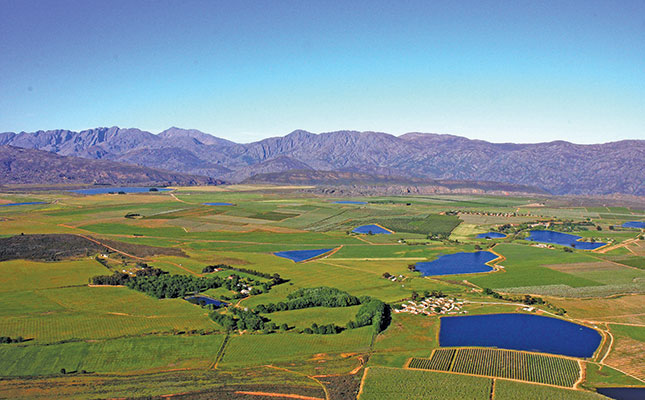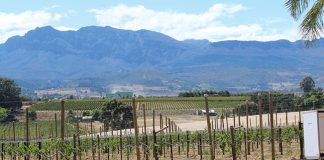
Photo: FW Archive
Land reform has the potential to breathe new life into the economy, especially in rural areas, by reducing unemployment and giving previously disadvantaged farmers the opportunity to become commercial farmers.
In addition, it has the capacity to reduce social unrest by lessening the historic and persistent gap between white and black land ownership.
READ ‘Elite capture’: how land reform favours the rich and powerful
In spite of much talk about its importance since the 30% redistribution target was set in 1996, land reform has never been a political priority.
Instead, it has been shrouded in controversy, with hundreds of millions of rand being wasted on failed projects due to a variety of reasons, ranging from government ineptitude to a shortage of skills and lack of business and financial support.
Even the number of hectares that have been transferred is uncertain. Government last year argued that there was still a long way to go, but a special report by Wandile Sihlobo and Tinashe Kapuya, ‘The truth about land ownership in South Africa’, estimated that a total of 17,4 million hectares had been transferred from white ownership since 1994, which is equal to 21% of the 82,8 million hectares farmed in South Africa.
The Karsten Group and the Dutoit Group are two examples of commercial farmers who have taken matters into their own hands.
Both were practising transformation years before it became the pressing issue of today. To them, it is a way of giving the workers on their farms, as well as South Africa in general, a brighter future.
Pieter du Toit, managing director of the Dutoit Group
Pieter du Toit is one of the founding members, and vice-chairperson of, the Witzenberg PALS, a community initiative aimed at transforming the agriculture industry through establishing successful black commercial farmers.
The Dutoit Group has been involved in three successful transformation projects, namely the Crispy Group, Koukamma Fruit Packers, and Milau in the Eastern Cape, established 13, 12 and 20 years ago respectively.
How do you feel about land reform today?
Farmers realise that times have moved on and the industry needs to transform. Most of them, both commercial farmers and new entrants, feel that transformation is not happening fast enough.
There’s a lot of goodwill to make land reform succeed, but also many challenges obstructing progress.
What are the biggest lessons you have learnt so far from your land reform attempts?
First of all, there’s no such thing as a quick fix. Real transformation takes time, as farms are expensive, the return on investment is low, and it takes years to develop the business acumen and skills required to be an adequate farmer, never mind a really successful one.
Even so, land reform needs to be more a matter of the heart than pure economics. In other words, you should sometimes be willing to take a risk on someone.
READ Mega farmers: let them inspire you
Banks should look at lower interest rates and more lenient lending criteria, and commercial partners should consider a lower return on investment. Beneficiaries, in turn, should be prepared to wait longer for businesses to become financially feasible.
We’ve also learnt the importance of communication. Often, beneficiaries’ expectations don’t match the capacity of an initiative. When they have to wait for a return on investment, the members of a group are frequently disappointed and unhappy, and this can lead to tension.
Politicians and activists should be kept away from projects, as they often use these to make themselves look good, or to cause dissent.
How have these lessons changed the way that you approach land reform?
We spend more time in communicating the purpose, goals, strategy and structure of a deal to ensure that all the beneficiaries are on the same page.
What are your plans for the future?
We’ll make use of the Witzenberg PALS model to commercialise small-scale black farmers and encourage investments in larger projects to grow with black investors. The Witzenberg PALS model is great, because instead of everyone doing his or her own thing, it represents a combined effort from farmers in the Ceres Valley, which helps prevent a duplication of resources.
In addition to this, we now have a central point from which to manage projects, and a united front for government negotiations. Witzenberg PALS currently has 160 projects on its books.
What are the biggest obstacles to land reform at the moment?
The main obstacles are regulatory issues, where government is involved, in terms of red tape for the approval of funding, water and land rights issues, and the subdivision of land.
It’s also difficult to find the right partners, and for black investors to gain access to financing without collateral.
To overcome these issues, projects should be financially feasible, and farmers need a backup plan in case government support does not materialise.
Email Pieter du Toit at [email protected].
Piet Karsten, founder of the Karsten Group
The Karsten Group’s land reform initiatives include equity scheme investments with permanent employees as partners, and strategic partnerships with land reform beneficiaries. Here, the group’s involvement ranges from physical management of farms to sharing advice and production facilities.
The company has also participated in strategic partnerships with the former Department of Rural Development and Land Reform to lend assistance in 10 land reform projects across the country.
How do you feel about land reform at the moment?
Land reform needs to be done. It’s something we owe to ourselves and others. It’s not only about the land, but about the empowerment of our own people.
What were some of the biggest lessons you learnt during your involvement in land reform projects?
Firstly, size matters. Working with more than 50 individuals in a group becomes too difficult to manage because of differing backgrounds and expectations, the fact that beneficiaries don’t always work in the same place, and administrative challenges.
To illustrate, if a group with more than a 100 beneficiaries wants to apply for a loan, it’s not only a matter of getting everybody to buy into the idea of obtaining a loan; you also need proof of address, ID copies and signatures from each beneficiary to do the loan application.
In addition, a project won’t work if you need to buy the farm with borrowed money.
Farming is too risky and the return on investment too low. For the project to be viable, beneficiaries must receive some return from the very first year. Having to wait for 30 years is demoralising and tends to cause infighting.
Besides this, as a commercial partner you need to put your money where your mouth is. In other words, you need to have a vested interest in the success of the project to show your commitment. The best way to do this is by sharing the risk.
How about the government projects you were involved in. What did you learn there?
Land must be transferred to the beneficiaries. Without transferral, the beneficiaries have no collateral. Lease agreements might be adequate for livestock and vegetable farmers, but with fruit orchards, farmers need to know they’ll see the benefit of their efforts over the long term, otherwise they won’t invest in new orchards or infrastructure.
Do you have any advice on how farmers should approach government for help?
Land reform on a broad scale will not succeed without government’s buy-in, and buy-in needs to come from a high level, such as the presidency.
The problem is that agriculture is not the ‘flavour of the month’, so it isn’t prioritised like Eskom or South African Airways.
Government doesn’t necessarily need to provide financial aid. However, it can use its influence to improve the business environment and grow the market to improve the overall sustainability of the sector.
It takes long to get any feedback or support from government, and the support usually comes at the wrong time. My advice to farmers, therefore, is not to pin their hopes on government, but rather to get on with their own initiative in the area where they farm.
What are your plans for the future in terms of transformation?
The fruit industry has suffered a couple of tough years due to the drought and difficult market conditions.
Currently, our biggest objective, both for ourselves and the initiatives in which we’re involved, is to get back on our feet to ensure that the 7 000 to 8 000 people directly and indirectly depending on us will continue to have an income.
Over the long term, we want to restructure some projects to improve their viability. For example, in projects where there are too many beneficiaries, we want to create mechanisms to allow beneficiaries to buy people out who no longer want to be part of it.
Also, we’d like to get into partnerships with government, retailers or exporters to help us expand production.
Empowering my own work corps has always been a high priority, because it improves work efficiency while rewarding people for hard work. On top of this, it allows me to grow my employees into a position where they’ll later be able to buy and manage their own farm.
Email Piet Karsten at [email protected].












